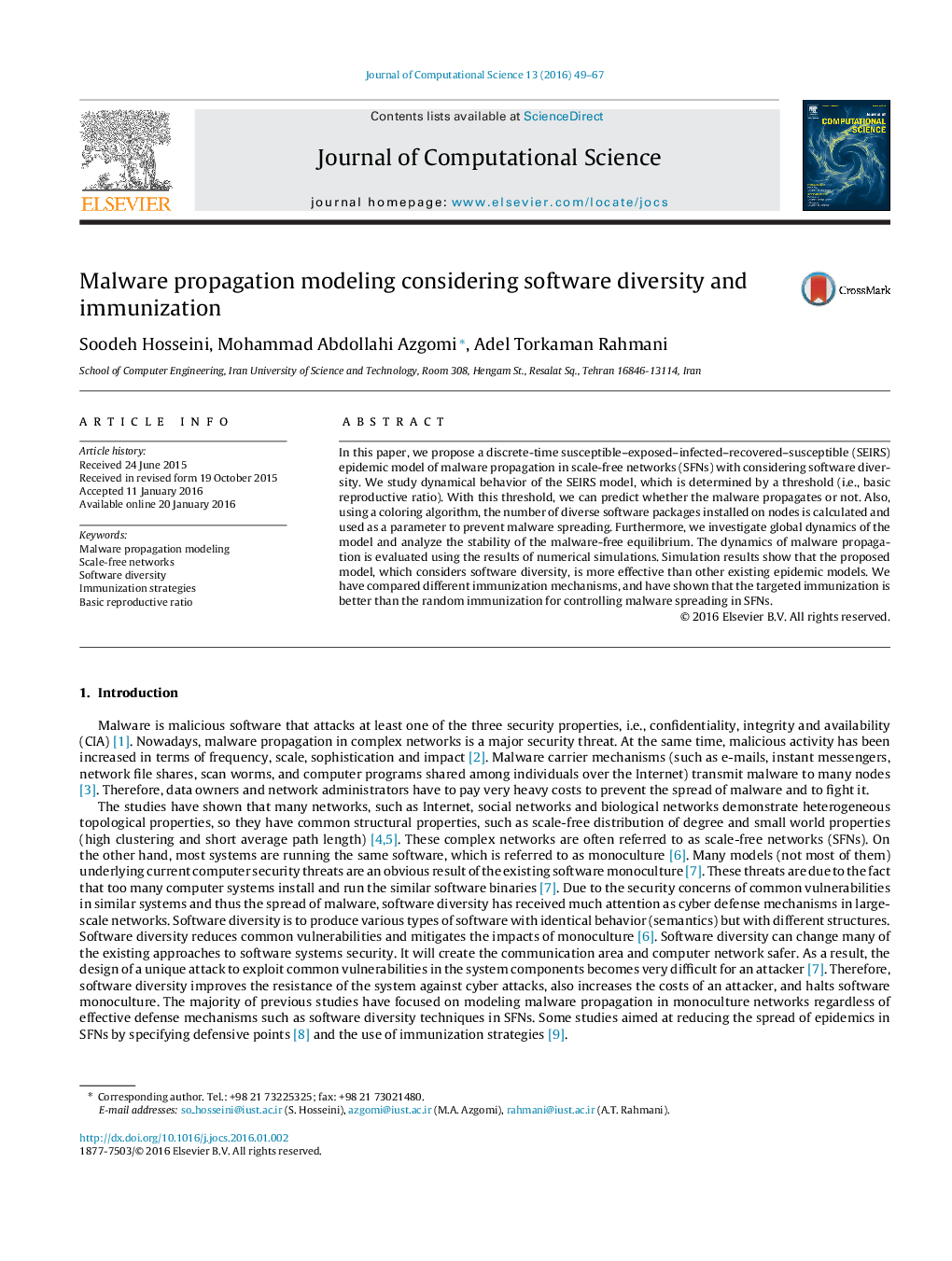| کد مقاله | کد نشریه | سال انتشار | مقاله انگلیسی | نسخه تمام متن |
|---|---|---|---|---|
| 429482 | 687586 | 2016 | 19 صفحه PDF | دانلود رایگان |
• In this paper, we propose a discrete-time susceptible–exposed–infected–recovered–susceptible (SEIRS) epidemic model of malware propagation in scale-free networks (SFNs) with considering software diversity.
• We study dynamical behavior of the SEIRS model, which is determined by a threshold (i.e., basic reproductive ratio).
• Simulation results show that the proposed model, which considers software diversity, is more effective than other existing epidemic models.
• We have compared different immunization mechanisms, and have shown that the targeted immunization is better than the random immunization for controlling malware spreading in SFNs.
In this paper, we propose a discrete-time susceptible–exposed–infected–recovered–susceptible (SEIRS) epidemic model of malware propagation in scale-free networks (SFNs) with considering software diversity. We study dynamical behavior of the SEIRS model, which is determined by a threshold (i.e., basic reproductive ratio). With this threshold, we can predict whether the malware propagates or not. Also, using a coloring algorithm, the number of diverse software packages installed on nodes is calculated and used as a parameter to prevent malware spreading. Furthermore, we investigate global dynamics of the model and analyze the stability of the malware-free equilibrium. The dynamics of malware propagation is evaluated using the results of numerical simulations. Simulation results show that the proposed model, which considers software diversity, is more effective than other existing epidemic models. We have compared different immunization mechanisms, and have shown that the targeted immunization is better than the random immunization for controlling malware spreading in SFNs.
Journal: Journal of Computational Science - Volume 13, March 2016, Pages 49–67
